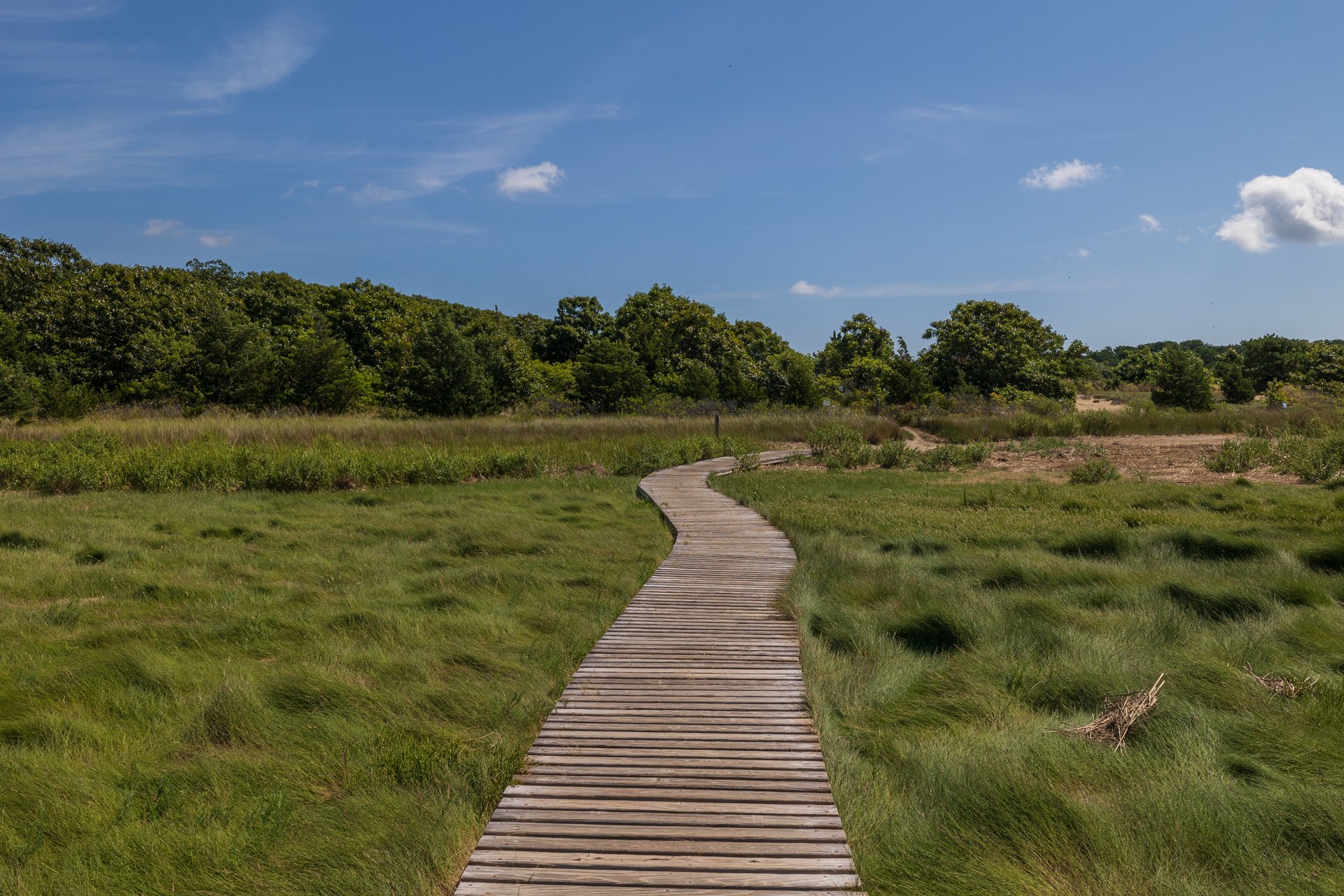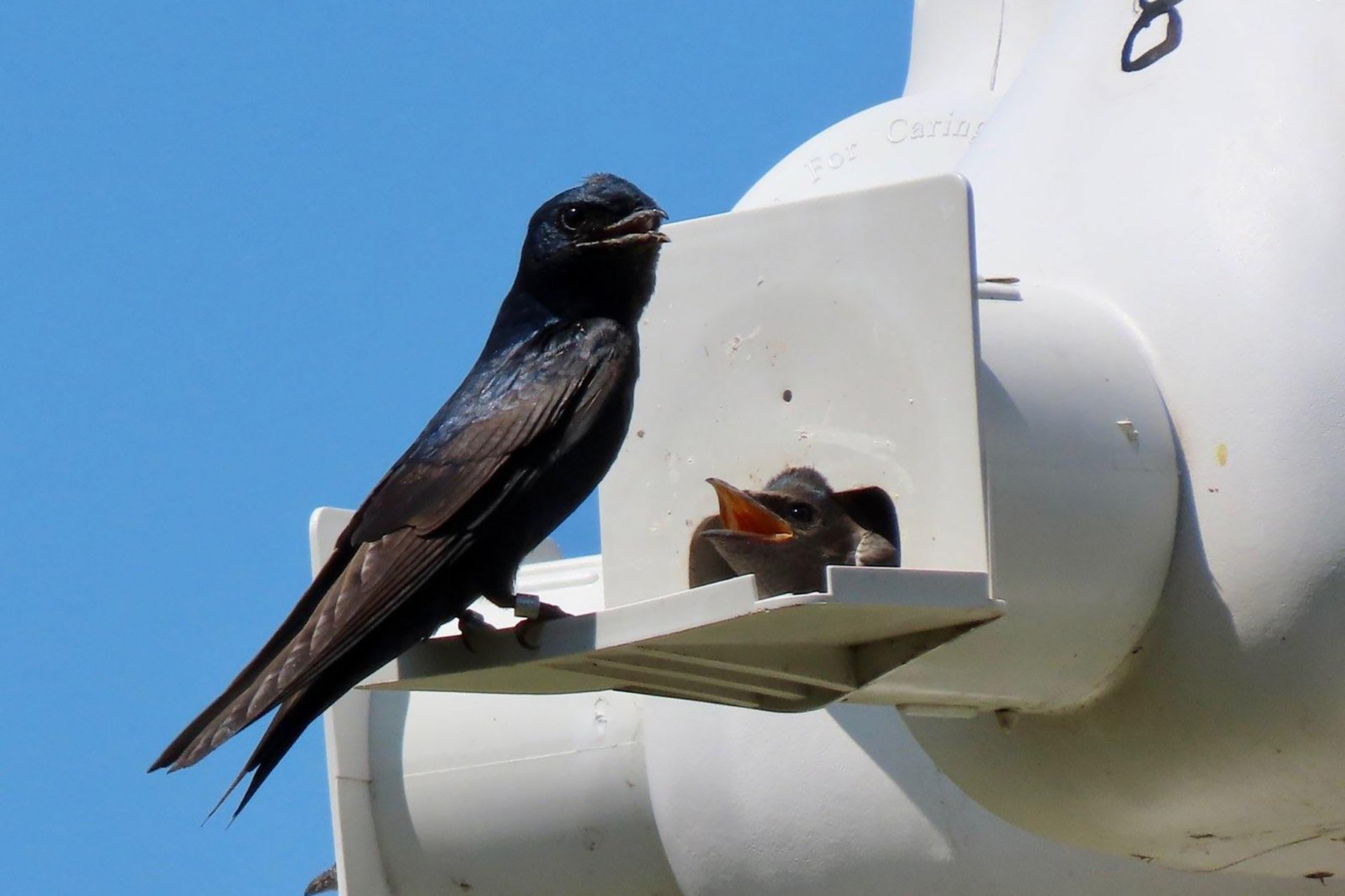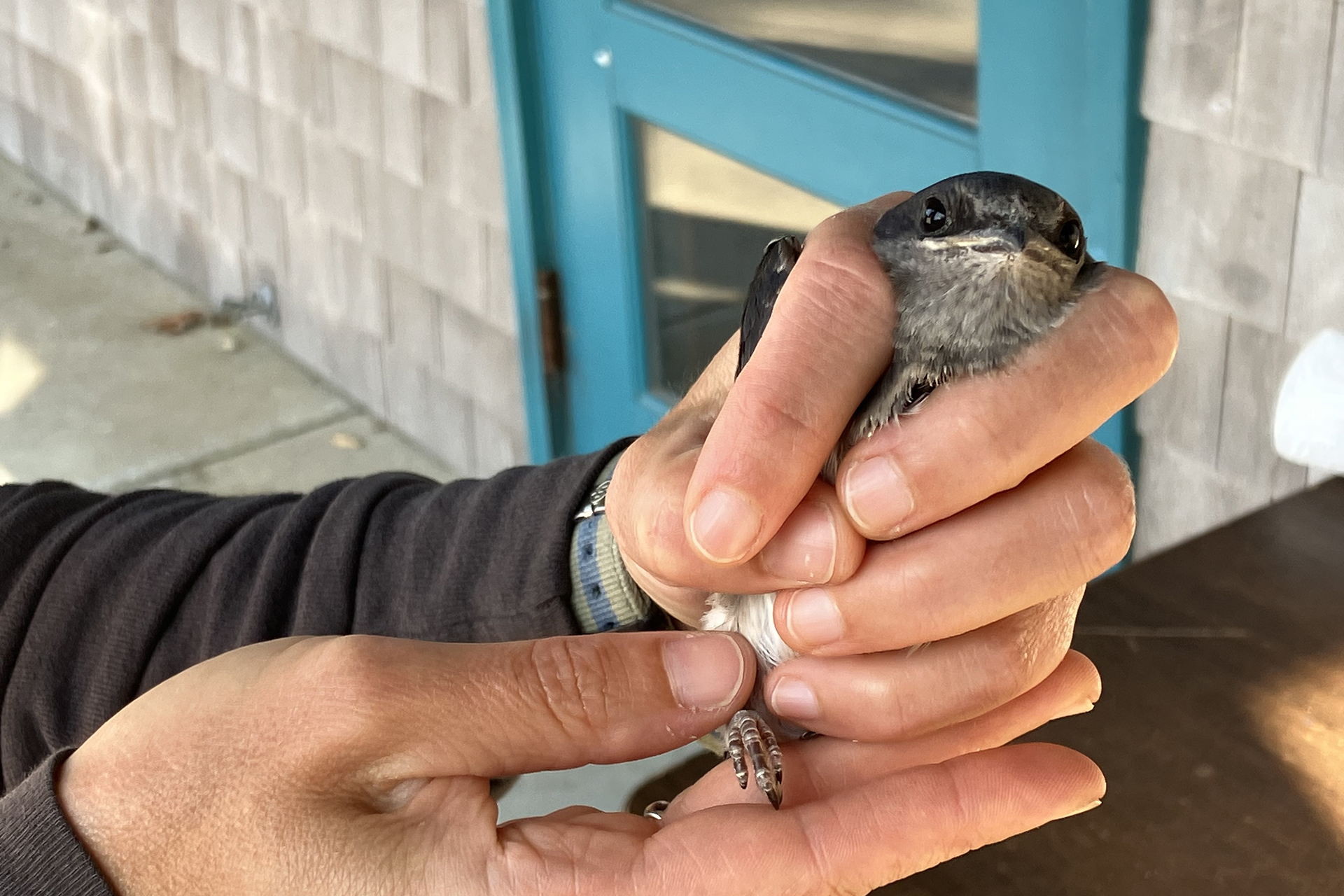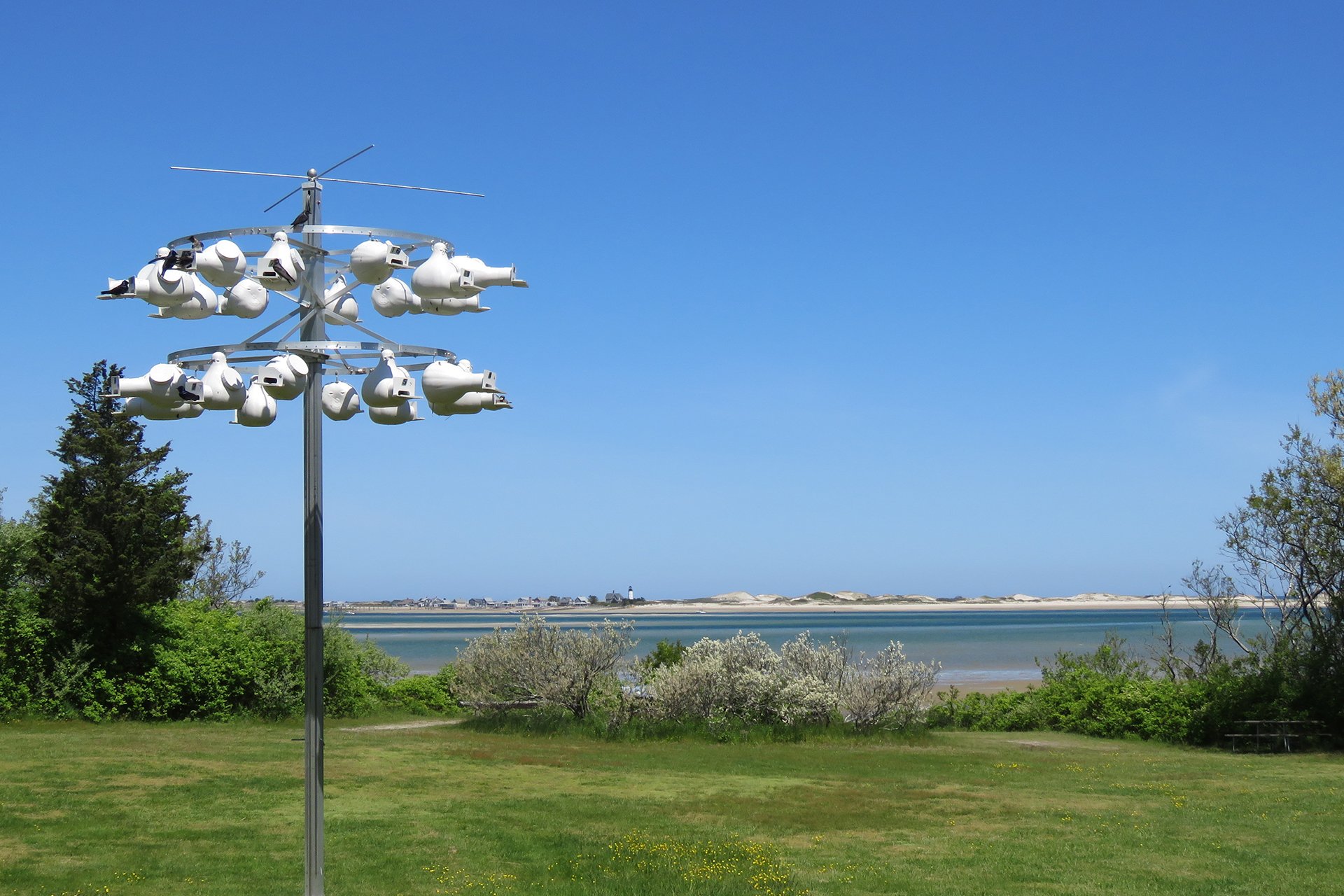Purple Martins used to be scarce on Cape Cod, mostly due to the region’s traditional cold, wet springs that can keep insects, their favorite food, from flying. In addition, invasive species, such as European Starlings and House Sparrows, have outcompeted martins for nesting space. In fact, Purple Martins in the eastern half of the U.S. now depend on man-made nests rather than natural cavities.
However, thanks to the efforts of local conservationists, the Cape now hosts a number of Purple Martin colonies. At Wellfleet Bay, a popular nesting area has been busy this nesting season.
A Full House at Wellfleet Bay's Purple Martin Nesting Grounds
Wellfleet Bay’s colony, which consists of two racks, each holding a dozen PVC gourds for nesting, was nearly a full house this summer. The birds made use of 21 of the 24 gourds.
2023 Purple Martin Nesting Season
Wellfleet Bay saw a 22% growth in fledged Purple Martins compared to last year.
-
95
eggs laid
-
86
hatchlings recorded
-
82
fledged martins
This summer, Wellfleet Bay’s science coordinator Mark Faherty color-banded 30 martin chicks. Because young birds can end up anywhere in their early years, the color bands let us know how far “our” birds are dispersing and where they’re breeding.
See Purple Martin Bird Life in Action at Wellfleet Bay
Wellfleet Bay Volunteer Jeanette Bragger says she’s amazed how many visitors are drawn to the Purple Martin nesting gourds just off the sanctuary’s parking lot. She says the large dark blue swallows can generate more questions than fiddler crabs or the occasional coyote, “I think it’s because we can stand relatively close to the gourds, watch the birds live their lives right in front of us, see the chicks, watch the parents bring food, and amaze us with their chatter and aerial displays.”
When chicks are mature enough, they can easily be seen waiting on the “porches” of their nest gourds for a parent to return with a juicy insect, often a dragonfly. As the young birds mature, they accompany the adults on foraging runs during the day. In the evenings some can be seen back at the gourds roosting. By late summer, the birds begin a long migration to their wintering grounds in the Amazon.
Growing Purple Martin Colonies at Long Pasture & Ashumet Holly
Purple Martins also have a colony at Long Pasture in Barnstable where they fared much better this summer than last year when cold, wet weather claimed almost half the usual number of chicks. This summer, they saw 76 eggs laid in the sanctuary’s two gourd racks, 62 eggs hatched, and 47 chicks fledged.
A 6-gourd rack installed at Ashumet Holly Wildlife Sanctuary in East Falmouth this year hosted five nests and fledged at least 16 young.
What Does the Future Hold for Purple Martins?
Because Purple Martins rely exclusively on nest gourds, we look forward to hosting and expanding our colonies for years to come! You can help martins and other songbirds by protecting the insects they depend on by not using pesticides and growing plants that support native insects.
Thank You
We wish to thank local Purple Martin conservationist Mary Keleher for encouraging Wellfleet Bay to install nest gourds and Mike O’Connor of Bird Watchers General Store in Orleans for donating them. Mary also provided 12 gourds from her Purple Martin colonies in Mashpee to Ashumet Holly in East Falmouth. Long Pasture’s gourd racks were donated by Bill Leitch.






